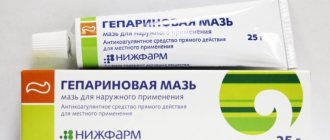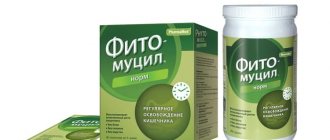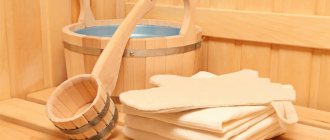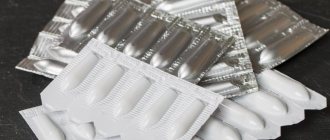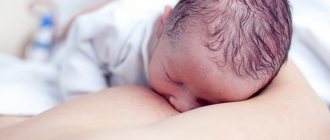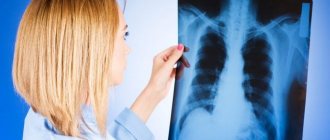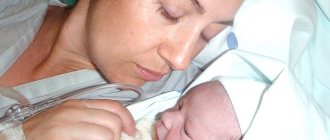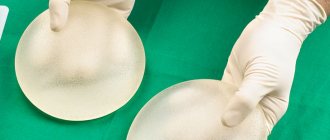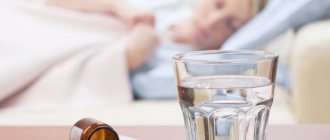How do hemorrhoids occur after childbirth?
Most often, the rudiments of nodes appear while the baby is in the mother’s womb. The uterus constantly increases in size and puts pressure on the pelvic veins. The situation is also aggravated by factors such as prolonged standing or sedentary work, problems with the passage of feces and others.
During the birth of a child, a woman has to push hard. As a result of this process, small and large nodes can increase in size and fall out. As a result, a woman discovers external hemorrhoids after childbirth.
Dilated veins do not always extend beyond the rectum. In some cases, hemorrhoids may remain inside a woman's body. However, it causes no less problems than external education.
Hemorrhoids during breastfeeding: causes
The following factors can provoke the appearance or exacerbation of hemorrhoids in a nursing mother:
- lack of physical activity. During gestation, especially in the last months, the expectant mother becomes inactive, which contributes to stagnation of blood in the vessels of the anorectal area. There is a high risk of hemorrhoids in women who are at risk of abortion or premature birth and require bed rest;
- constipation. Intestinal dysfunction may be a consequence of a lack of motor activity, high levels of progesterone in the blood, which inhibits the peristalsis of the intestinal wall. Also, the passage of feces is made difficult due to compression of the rectal canal by the pregnant uterus;
- improper and unbalanced nutrition during pregnancy. Pregnant women do not always watch their diet and often overeat, especially sour, sweet or spicy foods, which leads to constipation or diarrhea, which in turn can cause postpartum hemorrhoids;
- compression of the vessels of the rectum by the enlarged uterus;
- difficult natural childbirth. During a difficult birth or when a woman does not know how to push correctly, a large load is placed on the hemorrhoidal veins, which they cannot cope with. Also, very often, when labor is weak, the midwife causes pushing, stimulating the anus, which also negatively affects the condition of the hemorrhoidal veins.
The listed factors are the main causes of postpartum hemorrhoids.
Hemorrhoids after childbirth: treatment during breastfeeding
If you are faced with such a delicate problem, then you should contact a specialist as soon as possible and begin correction. Many women believe that if hemorrhoids appear after childbirth, treatment can be started only after stopping breastfeeding. This is far from true. Modern medicine makes it possible to carry out the necessary correction of such a disease without harm to the baby.
Depending on how advanced the disease is and what form it has, there are several methods to get rid of hemorrhoids after childbirth. The most popular and harmless way is to use folk effective recipes. However, doctors strongly do not recommend self-medication. If hemorrhoids appear after childbirth, you need to undergo an initial examination and only then begin correction. Let's consider the most modern methods of treating hemorrhoids during breastfeeding.
The main thing is the prevention of hemorrhoids
To prevent the appearance of postpartum hemorrhoids:
- proper nutrition during pregnancy, rich in fiber;
- weight control;
- giving up a sedentary lifestyle;
- constant struggle with constipation;
- performing special exercises;
- See a doctor at the first symptoms: mild itching and problems with bowel movements.
Conservative therapy
If hemorrhoids appear after childbirth, it is preferable to use medication during breastfeeding. This is the opinion held by phlebologists, proctologists and surgeons. Corrective drugs must be selected comprehensively. So, first of all, you need to stop bleeding and pain. It is also important to eliminate the inflammatory process or prevent it. The drug must have a wound-healing and antithrombosis effect.
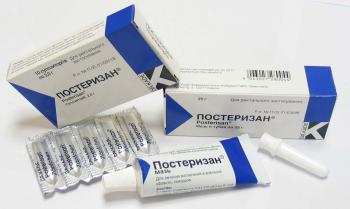
Most often, new mothers are prescribed ointments or suppositories for hemorrhoids after childbirth. However, everything depends on the individual characteristics of the location of the nodes. If varicose veins affect the inside of the intestine, then it is preferable to use suppositories. If the node is located externally, ointments and compresses are prescribed.
What kind of suppositories can be used for hemorrhoids after childbirth? Here are some of the safest and most effective drugs:
- “Procto-glivenol” (acts on blood clots, gradually dissolving them, relieves swelling and pain, relieves inflammation and prevents infection). This drug can be used not only after childbirth, but also during pregnancy (with the exception of the first third).
- “Relief” (suppositories quickly stop bleeding from the node, relieve burning and eliminate pain). The drug is available not only in the form of suppositories, but also in the form of an ointment. This makes it possible to treat prolapsed nodes.
- “Posterizan” (the drug increases the body’s immune defense, heals wounds and cracks, helps restore intestinal activity). This product is also available in different forms. Its hypoallergenic composition allows you to use the drug without any fear while breastfeeding.
Surgical methods
How to cure hemorrhoids after childbirth if medications are powerless? When the process turns out to be very advanced, the latest surgical methods of correction will come to the rescue. So, many of them can be used during breastfeeding.
- Use of liquid nitrogen. This method allows you to remove the formed node as painlessly and effectively as possible. During the procedure, the doctor freezes the hemorrhoids. After some time, the pathological membranes die off and intestinal functionality is restored.
- Sclerosis. This method is more suitable for those women who have external nodes (external hemorrhoids). During the procedure, the doctor injects a special substance into the affected areas, which acts on the walls of blood vessels and dissolves them. Within a few weeks you will find that there is no trace left of hemorrhoids. It is worth noting that when using this method, you may need to stop breastfeeding for several days.
- Surgical removal. How to cure hemorrhoids after childbirth if nothing helps? In this case, doctors recommend simply removing the formed nodes. However, when choosing this method, there is a need to temporarily suspend natural feeding.
Video - Therapeutic exercises for hemorrhoids
An effective means of treating and preventing postpartum hemorrhoids is special exercises. A small set of basic movements is offered by physical therapy trainers.
Share your experience in the fight against hemorrhoids. What helped you, what treatment did the doctor prescribe for you, how long did it take you to overcome this problem? Are preventative measures, proper nutrition and exercise helping you? Your experience is very important for our readers!
We recommend reading:
- How long does bleeding last after childbirth What can and cannot be eaten after childbirth After childbirth, hair falls out a lot: what to do When menstruation begins after childbirth while breastfeeding
Traditional methods
What folk remedies can be used to treat hemorrhoids? In fact, there are a lot of options. However, when choosing a particular recipe, it is worth considering the possibility of an allergic reaction in the baby. Remember that most drugs are absorbed into the blood and partially pass into breast milk.
Using Potatoes
This method was also used by our grandparents. However, it can only be used if there is no bleeding or cracks. Otherwise, you may get an infection.
Peel a young potato tuber and make several candles from it. Those that will not be used immediately can be frozen. You need to insert a potato suppository several times a day immediately after cleansing the intestines.
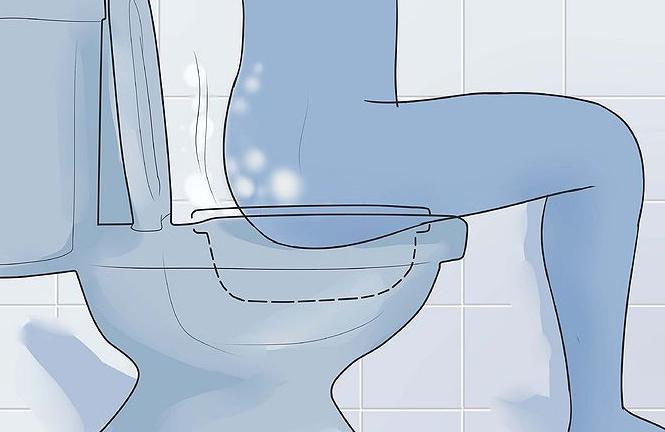
Herbal decoctions
If you are faced with the loss of nodes, then you can use baths. To prepare the contents you will need chamomile, string, and nettle herbs. These components help relieve inflammation, swelling and pain.
You can take such baths several times a day. However, women with postpartum bleeding should avoid this prescription.
Honey compresses
Bee products are an effective anti-inflammatory and absorbent agent. Each time after cleansing the intestines, lubricate the nodes with honey or propolis.
If you are allergic to these components, then you should abandon this recipe and choose an alternative way to cure hemorrhoids after childbirth.
how to treat hemorrhoids after childbirth during lactation forum
Administrator

>>>>> Click here if you don't want to wait <<<<
>> You will be redirected in 5 seconds <<
Despite the many advantages and effectiveness of homeopathic suppositories for hemorrhoids, their use is not enough in severe stages of the disease, with complications with bleeding, thrombosis, and tissue necrosis of nodes.
Suppositories with homeopathy have practically no contraindications, but if the body is individually intolerant, their use is undesirable.
Some drugs are contraindicated during pregnancy, lactation, children under 6 years of age, and the elderly, so you should carefully read the instructions before use.
Terms of use
- Before use, you should empty your intestines; if this does not happen naturally, laxatives or enemas are used.
- Wash the anal area thoroughly.
- Wash your hands thoroughly with soap.
- Remove the suppository from its packaging and insert it into the anus as directed.
The course of treatment for hemorrhoids with homeopathic suppositories is determined individually by the attending physician. You should always remember that using drugs for other purposes, even the most harmless ones, leads to ineffective treatment or the development of complications.
Treatment of hemorrhoids with blood at home Bleeding can be considered the main symptom of hemorrhoids because it...
Vishnevsky ointment has proven itself well; it perfectly eliminates the symptoms of these two diseases. This time-tested drug quickly removes various damage and also helps normalize blood circulation in the nodes. Before being treated with this inexpensive remedy, preparation is necessary. To begin with, special compresses are applied, and only then the balsamic liniment according to Vishnevsky is applied.
Troxevasin is mainly used to treat hemorrhoidal plexuses, but due to its good regenerative abilities it is also used to treat anal fissures. This drug is usually prescribed in combination with other medications that have an analgesic effect. The duration of treatment is determined by the proctologist depending on the well-being of the sick person.
Some patients refuse to use ichthyol ointment because it has a special smell that many cannot stand. But it is highly effective and promotes the healing of cracks that often form with hemorrhoids. Ichthyol ointment is not specifically intended for the treatment of hemorrhoids, but many people have been convinced of its benefits. The healing properties it possesses perfectly eliminate the symptoms of this disease.
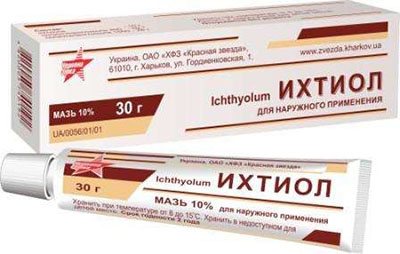
During anal coitus, it is necessary to use condoms; this measure will protect against sexually transmitted infections.
- Anal contact should be avoided if there are fissures, hemorrhoids or other pathologies of the rectum.
- Parterre movements should be smooth and soft so as not to harm the thin walls of the intestines.
- Immediately after anal sex, the condom should be thrown away and vaginal contact should occur only after hygiene procedures. If this is not done, there is a high probability of unpleasant consequences, since pathogenic microbes from the rectum can enter the vagina and cause a serious infection.
- The use of condoms with scents is not recommended; this can lead to allergic reactions and cause irritation of the mucous membrane.
- You should not have anal sex regularly; long pauses must be maintained between contacts.
- Natural components (sea buckthorn oil and wax) act gently and do not cause complications;
- Relief occurs quickly, so the disease does not develop and does not progress to the next stage:
- The angioprotective (vascular protective) effect of sea buckthorn ensures a stable and long period of remission after a course of treatment (subject to compliance with the exercise and nutrition regimen);
- Contraindications for use are minimal - cannot be used only if the components are intolerant, there are no age restrictions;
- Suppositories with sea buckthorn during pregnancy and lactation are even recommended - the beneficial properties of sea buckthorn, when released into the blood, will in no way harm the baby and help the woman tolerate the disease more easily.
In the range of hemorrhoid remedies available in pharmacies, suppositories with sea buckthorn occupy a special place.
They have a natural composition and unique qualities of a medicinal plant, which has long been used in folk and traditional medicine.
Suppositories containing sea buckthorn are an effective remedy in the fight against hemorrhoids . Its timely use will relieve complications of the disease.
Treatment of hemorrhoids with sea buckthorn suppositories provides a lasting therapeutic effect in the initial stages (1 and 2) of the disease, if the recommendations for use are followed.
In case of stage 3 disease, this drug acts as an adjuvant along with other medications prescribed by the doctor.
No matter what healing properties sea buckthorn has, suppositories for grade 4 hemorrhoids are ineffective, like other medications - only surgery will help. But during rehabilitation after surgical removal of nodes, suppositories are very effective.
Beneficial features
Candles against hemorrhoids with sea buckthorn have many positive medicinal qualities and some advantages over foreign analogues:
Mode of application
Instructions for using rectal suppositories are simple and clear:
- In the list of reasons for the development of hemorrhoids, constipation ranks high. People suffering from this disease rarely seek help from specialists. It is not always possible to cope with constant constipation on your own. But this is a direct path to other health problems.
Causes and symptoms of constipation
Symptoms of constipation Diagnosis Reduced frequency of bowel movements, severe straining during bowel movements, frequent urge to defecate, feeling of incomplete bowel movement, liquid feces.
Palpation of the abdomen, medical history, rectal digital examination, blood and stool tests to detect occult blood, colonoscopy, sigmoidoscopy, etc. Impaired intestinal motility causes constipation. There can be many reasons for this:- stress, depression
disruption of the endocrine system
- taking medications
- sedentary lifestyle
- impaired blood circulation in the intestinal walls
- intestinal diseases
- pathologies of the anorectal region
- decreased physical activity of a person, sedentary or standing work;
- prolonged constipation, straining;
- lifting heavy objects, including a passion for weightlifting;
- pregnancy and childbirth.
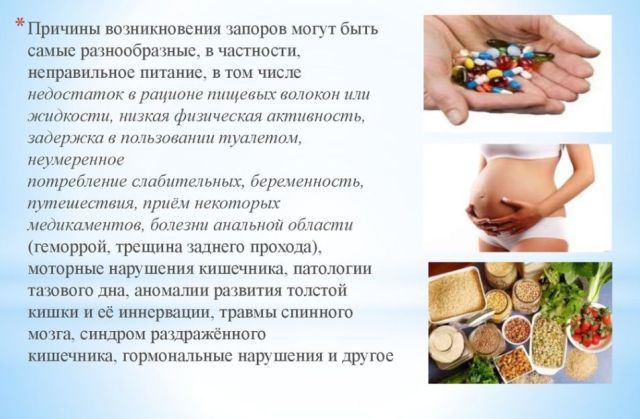
The statistics of visits to a proctologist leaves much to be desired, since 40% of people come to the appointment who are already in the last stages of the disease, requiring surgical intervention by doctors. Symptoms of hemorrhoids rarely go away without a trace. If in the future the patient does not receive the necessary treatment, the disease passes from one stage to another, which will be associated with the use of more complex methods of healing, starting with infrared coagulation and ending with disarterization. The number of nodes in the anus and the type of mucous membrane in the rectum influence the doctor’s choice of treatment methods.
Desarterization is carried out using local anesthesia. Half an hour is enough for the patient to return to normal life. If a patient suffers from diarrhea or constipation for a long time, continuous pain in the anus, causeless weight loss, or anemia, then be sure to avoid alcoholic beverages and beer. You should seek help from specialists immediately.
The patient needs complete vitamin complexes and a special regimen of medications prescribed by a doctor for hemorrhoids. If there are no special recommendations, then you should drink about 2 liters per day, including soups in your diet. When choosing food for yourself, a person with hemorrhoids should not get carried away with fibers of plant origin, which sometimes leads to the following types of diseases:
External hemorrhoids are the most common disease of the rectum.
With it, for one reason or another, expansion of the superficial (hemorrhoidal) veins near the anus occurs.
Causes of external hemorrhoids
What does external hemorrhoids look like?
External hemorrhoids are manifested by superficial nodes, lumps around the anus, which can be seen during a normal visual examination, and the patient himself can feel them with his own hands.
These cones are about 1 cm or larger in size and elastic.
Manifestations of internal hemorrhoids
The first signs of internal hemorrhoids are a feeling of discomfort that occurs during the act of defecation. In this case, the patient may feel bloating, burning and itching in the anus. At the same time, he may have a feeling of a foreign body in the rectum (it appears both before and after defecation). In some cases, rectal bleeding and abdominal pain occur.
Sometimes, during bowel movements, internal hemorrhoids can come out. Moreover, this is not always accompanied by painful sensations, or they will simply be insignificant. As the disease worsens, the nodes greatly increase in size and the hemorrhoidal vessels dilate, thereby causing a narrowing of the rectal lumen.
In turn, the narrowing disrupts the movement of feces to the anus. As a result, the patient experiences constipation, which causes severe discomfort. Excessive accumulation of feces in the rectum leads to pain, and if irritation of the rectal mucosa is added, the situation can become even worse.
During the progression of internal hemorrhoids, the causes are manifested by an increase in the frequency and amount of bleeding. Moreover, if blood initially appears only on toilet paper, then over time it will begin to flow out in streams or drops after the next act of defecation. Such manifestations indicate the formation of second-degree hemorrhoids.
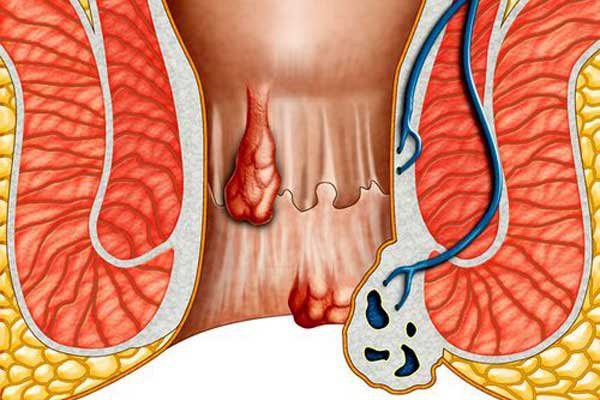
Grape;
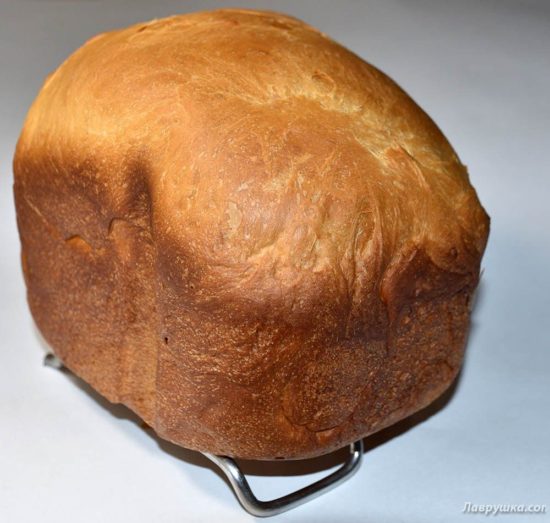
In order not to get confused by who, when and for how long sick leave is issued, it is recommended that you familiarize yourself with the issuance scheme:
- For outpatient treatment, the sheet is issued by the clinic (therapist or proctologist) for an approximate period of 7 days.
If treatment does not bring results, transfer to a hospital is recommended. In this case, the sick leave certificate is extended for the entire period of hospitalization by the hospital itself (proctologist) where the patient was admitted. Duration from 10 days.
If a patient in serious condition was immediately admitted to the hospital and an operation was performed, then the hospital opens the sheet, and the clinic continues.
Hemorrhoids are a disease that requires long-term treatment and bed rest. The doctor issues a certificate of incapacity for work for the entire period of therapy in the acute stage of the disease, pre- and postoperative periods.
Do not forget that the result depends on timely treatment. The sooner therapy begins, the better for the patient's health.
Be healthy!
Do they give sick leave for hemorrhoids?
Patients are often interested in the question: is sick leave required for hemorrhoids and, if so, for how long? A proctologist will help you answer these questions. You should make an appointment with him for examination and appropriate treatment.
These sports for hemorrhoids help not only keep the body in good physical shape, but also help improve well-being and reduce adverse symptoms. Doctors do not recommend sitting for a long time; you need to do a short warm-up every hour. To do this, you can perform several exercises, move actively and warm up.
Deep squats and muscle stretching exercises will give good results. Among the general recommendations, experts advise not to wear tight underwear and not to push while sitting on the toilet. Achieve soft stools by eating high-fiber foods. The intestines should empty quickly and effortlessly.
An approximate set of exercises for hemorrhoids
Sea buckthorn suppositories in the treatment of hemorrhoids
Thanks to such a wide range of positive effects on the body, sea buckthorn has gained great popularity as a remedy. Many medications are made on its basis. According to patient reviews and doctors’ recommendations, sea buckthorn medicines are indispensable for skin diseases. They perfectly treat eczema and are good for a whole list of female diseases. And sea buckthorn suppositories are an excellent remedy for the treatment of hemorrhoids.
One of the biggest inconveniences caused by enlarged hemorrhoids is bleeding and spotting. Substances included in sea buckthorn oil have a hemostatic effect. In addition, they normalize blood circulation in the damaged area and make the walls of blood vessels stronger.
Why are candles so popular? They can be inserted directly into the anus. This way they will act directly on the diseased area.
- in the first of them the patient does not experience discomfort and practically does not notice symptoms;
- in the absence of timely treatment, hemorrhoids progress to the next stage - the second, at which the symptoms of the disease are more obvious;
- in the last two stages of development of this disease, treatment requires the use of surgical intervention.
Types of disease
Clinical manifestations of the disease can be varied, depending on them, chronic hemorrhoids can be:
- combined;
- burning;
- painful sensations.
At first, this disease may have no symptoms at all. If hemorrhoids develop into more complex forms, then the symptoms become severe.
In the early stages of chronic hemorrhoids, bleeding may occur even if there are no other symptoms at all. That is why very often pathology in the early stages is detected by chance.
If the disease is in remission, then bleeding occurs in the lowest possible quantities.
If blood from the anus is released in large quantities, this can lead to the development of anemia in the patient.
Complications after laser coagulation are rare. But in some cases, some problems may arise due to errors made during the procedure. So, if bleeding occurs after the intervention, this may indicate poor cauterization of the node.
Sometimes bleeding occurs due to injury to postoperative wounds by dense feces. Fear of pain during bowel movements can cause psychological problems. In this case, laxative therapy is recommended. Additionally, the patient should eat only light foods in the first days in order to make the first bowel movement as easy as possible.
Sometimes men experience acute urinary retention after surgery. But this problem is easily solved by inserting a catheter. In the absence of proper care, postoperative wounds may become infected with subsequent suppuration. Therefore, it is necessary to follow the doctor’s recommendations and thoroughly treat the operated area.
To avoid the risk of complications, contact reputable clinics and have the procedure performed only by a qualified and experienced surgeon. After the operation, the patient must remain under the supervision of a proctologist and visit a specialist for a preventive examination once a year.
Advantages of the method

Content
About the drug
Diclofenac is one of the most famous representatives of the NSAID group (non-steroidal anti-inflammatory drugs). It is widely used in various fields of medicine - in rheumatology, general surgery, traumatology, neurology, ophthalmology, gynecology, and oncology.
The use of Diclofenac for hemorrhoids is associated with its ability to quickly relieve pain in any inflammation and prevent the formation of blood clots during venous blood stagnation.
This drug is available in different dosage forms, allowing you to choose the optimal treatment method for the patient:
- Photo 4
In accordance with the size and degree of prolapse of nodes, the following stages of their increase can be distinguished:
- The first stage (diameter - from 0.5 to 1 cm) - there is no pronounced leg, prolapse from the anus is not observed (see photo 1). Lumps can only be detected by endoscopic examination of the rectum or digital examination.
- The third stage (diameter from 2 to 2.5 cm) is the designation of a pronounced leg. When, during defecation, the node comes out of the rectum (see photo 3), and its reduction is carried out only with outside help, this indicates the progression of the disease. Often such a process ends with pinched nodes in the anus, which contributes to the development of thrombosis, accompanied by tissue necrosis.
- The fourth stage (diameter more than 2 cm) - there is a clearly defined leg. When the hemorrhoidal node comes out of the anus (see photo 4) during bowel movements or during muscle tension (when coughing, laughing, walking, lifting weights), then we are talking about the last stage of hemorrhoids. It is impossible to straighten it on your own; you need the help of a doctor.
The second stage (diameter - from 1 to 2 cm) - the appearance of a vaguely defined leg. This stage is set if the node has at least once crawled into the anal canal during defecation (see photo 2). This is accompanied by an unpleasant sensation of a foreign body in the anus. The venous-vascular plexus at this stage of disease progression returns on its own.
If you have not yet developed hemorrhoids, but characteristic discomfort or even pain is present during bowel movements, then you should not hesitate to visit a doctor. It is much easier to treat the disease in the early stages of development.
How to correct hemorrhoids
You can straighten prolapsed hemorrhoids at home, but it is important to know some rules. This should be done only after taking or using local anesthetics (heparin ointment, troxevasin). It is imperative to carry out the procedure using disposable rubber gloves to prevent infection.
The fallen knot should be gently pressed back into the anus, remove the finger and squeeze the buttocks tightly. After the procedure, you should maintain a supine position for at least half an hour. To prevent hemorrhoids from bursting and other complications arising, the first reduction procedure should be done with the help of specialists. Only after receiving medical advice and acquiring the necessary skills can you reduce hemorrhoids at home.
What to do if nodes fall out
Only a doctor should treat such a disease, which will help prevent the progression of the disease. Ideally, it is recommended to begin treatment with preventive measures:
- eating more fiber-rich foods;
- maintaining an active lifestyle;
- normalization of stool;
- giving up bad habits.
It is not always possible to straighten a prolapsed hemorrhoidal plexus yourself without consequences, therefore, at the first signs of its prolapse, it is recommended to immediately seek help from a doctor.
The specialist will carry out the reduction procedure and, in the initial stages of the disease, will recommend making suppositories daily and applying ointment to the affected area. This will ease the severity of hemorrhoid symptoms, relieve tissue swelling and help stop the inflammatory process. The disease can be treated with suppositories even during pregnancy and lactation, since the active ingredients of this medication are practically not absorbed into the blood.
In the absence of thrombosis, the following non-surgical treatment is performed for stages 2 and 3 of hemorrhoids:
- Sclerotherapy - a sclerosing medicine is injected into the area of the lump, helping to reduce the diameter of the nodes.
- Infrared photocoagulation - under the influence of infrared radiation, the hemorrhoidal plexuses are coagulated, which helps reduce blood flow to the area of inflamed areas.
- Proximal ligation - under the influence of local anesthesia, point ligation of the arteries is carried out, which provide nutrition to the altered nodes.
- Installation of a latex ring - this procedure allows you to achieve the death of the inflamed area of the hemorrhoidal plexus within 1-2 weeks after installation.
The fourth stage of the inflammatory process can only be treated surgically. In order to prevent surgery, you should not delay treatment, but seek help from a specialist in the early stages of the disease.
- abdominal pain with hemorrhoids, who took natalsid for hemorrhoids, can enteric tablets irritate hemorrhoids, laxative suppositories during pregnancy for hemorrhoids
